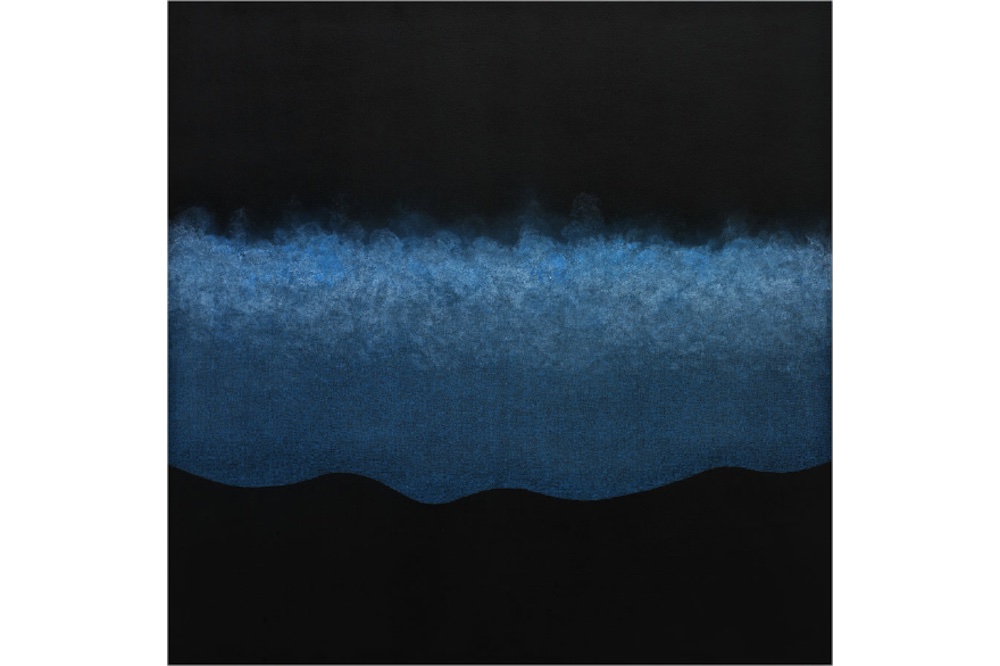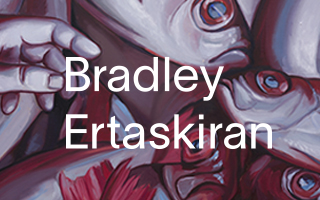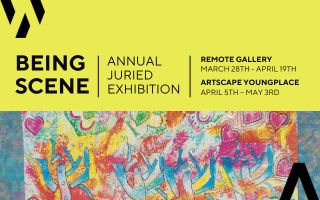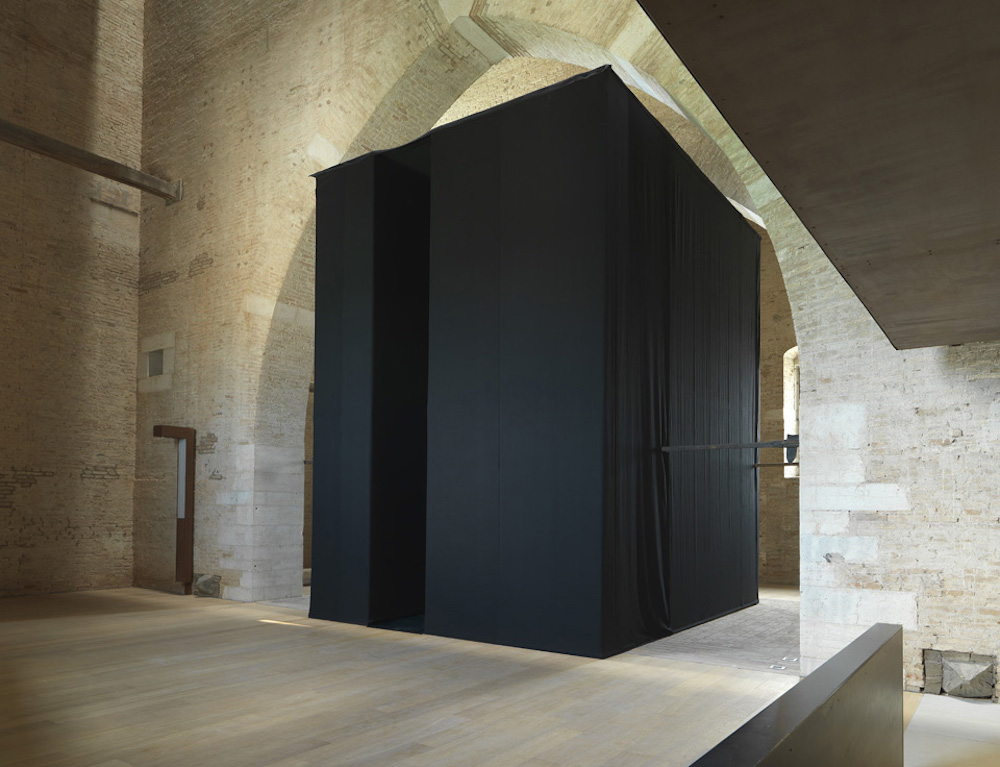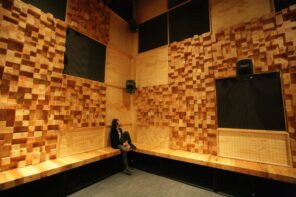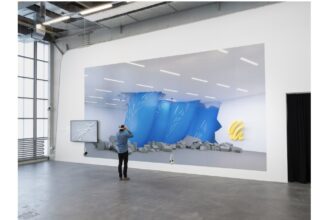Last April, in the fog of the second wave of the COVID-19 pandemic, as the bodies piled up, India heaved with hate. The Delta variant surge was catalyzed by the Indian government’s focus on weaponizing the COVID-19 pandemic on the road to theocracy. The government allowed a superspreader event, a massive Hindu religious gathering, to take place in north India (while declaring Muslims to be responsible for “corona jihad” the previous summer, even before the first lockdown). Indians struggled to make their trauma visible amidst attempts at erasure: the suppression of the death toll and clampdowns on criticism of the Indian government’s mishandling of the crisis. Years of protesting the Narendra Modi-led government have brought to light an aesthetic of radical respiration: using our lungs to challenge the sensorial arrangements of a Hindu nationalist imaginary. This was exemplified by speeches emphasizing constitutional values, words of Marxist poets chanted in the streets, the anti-caste songs of Ambedkarite musicians and the everyday public life modeled by Shaheen Bagh protestors, the farmers’ movement, and workers’ strikes. Breathing together is currently dangerous, but breathing apart has served to visit death upon our citizenry in a different way. Deadlier than any virus, religious fascism is asphyxiating the Indian republic.
For two years, through a respiratory pandemic, I’ve feared for my breath. Having survived tuberculosis six years ago, my lungs, like scratched glass, are permanently scarred by disease fated to show up in X-rays all my life. When the infection spread to my larynx, my vocal cords swelled up so much that they became unable to turn the air expelled from my lungs into sound (before I was diagnosed, one disapproving doctor blamed the loss of voice on “all the sloganeering at protests”). Perverse kinds of selfies, the fortnightly radiographs from the initial, six-month period of my treatment years ago still haunt me. They are images that revealed not just my affliction, but my very being. Vulnerable, contagious, voiceless, my breath imperilled—I was a figure who had become spectral, on the edge of disappearing.
As India’s BJP-led Hindu nationalist government left citizens to their fate and then misrepresented its handling of COVID-19, my brief spell as a body in crisis alerted me to my relationship to a body politic gasping for air and being eclipsed by the shadow of its past. Was this what a nation looked like as it slipped into the umbra of fascism, its citizens fighting to breathe? How did the mass panic about hypoxia intensify the daily state of suffocation certain groups of Indians—Muslims, Dalits, the working class—have been forced to endure for decades, especially during the past seven years of BJP rule?
The first time I encountered Shirazeh Houshiary’s Breath, 2003, at Jhaveri Contemporary in 2013, I was short of breath myself. Trekking up from the sun-blanched twists of Mumbai’s Malabar Hill into the gallery, I huffed softly, waiting for my eyes to adjust to the darkness of the room. Before me were four small screens displaying motion graphics that, from afar, appeared to be celestial bodies aglow in the night. Overlapping liturgical songs immersed me as I watched the forms onscreen float, as though the sound were unfurling from the sky. There was something almost premodern about that initial impression of Breath, an experience of art as a spiritual phenomenon. Moving closer to the monitors and paying attention to the sound, I realized that the video graphics were, in fact, depictions of the inward and outward movement of the vocalists’ breath as they hummed songs from different faiths. In many parts of the ancient world, it was believed that bodies in the heavens rhyme with those on earth. Indeed, the more I looked, these Breaths resonated with the rhythm of my own lungs, abrim with the music echoing through the room.
The palimpsest of Houshiary’s Breath reminds me of India’s long history of syncretic, if not always euphonious, practices of breathing. Constitution notwithstanding, India’s secularism has been on a ventilator for a while. Through the crescendo of intermingling Buddhist, Christian, Jewish, and Sufi incantations—the sounds that inspire the visuals—Breath offers up the dream of syncretic harmony. Its sonic coalitions, as well as its sensuous humanism, encourage a perhaps naïve confidence during a moment when breathing is in jeopardy and harmonized histories forgotten.
Breath is the British-Iranian artist’s first video work, and marks an important moment in her practice, extending into the virtual realm her painterly and sculptural engagement with expansion and contraction, form and formlessness. In particular, Houshiary’s use of ritualistic repetition in her canvas works from the early 1990s onwards—inscribing words onto them until the script disintegrates into illegible marks—informs Breath’s haunting overlap of disjunct phonemes visible as gauzy, biotic pulsations. The digital animations were made using VR technology, converting physiological exertions into throbbing abstractions, the musical mingling of breaths suggesting a breach of bodily boundaries, of skin, “the only real border” according to Houshiary. The process of respiration permeates the membrane between the hidden and the seen, as critic Davina Quinlivan points out in The Place of Breath in Cinema. Imperceptible as it is most of the time, breath can be a stunning proof of vitality when occasionally glimpsed, as vapor, as gesture, or as ephemeral mark.

Shirazeh Houshiary, “Fission,” 2019. Photo: Dave Morgan. © Shirazeh Houshiary, courtesy the artist and Lehmann Maupin Gallery.
During the winter of my tuberculosis treatment, I came to rely on the condensed clouds formed by my morning exhalations to give myself hope that I would recover, that I was alive, and that I would speak again. Discussing Breath, Houshiary says, “My breath left a residue of mist on the surface of the mirror. I went back to see if I could see anything, and the mist evaporated.” As with my X-rays and misty exhalations, Houshiary brought pneuma, or the vitality of a person, to the threshold of vision. Quinlivan termed this fluctuation of presence and absence “(in)visibility”: “a kind of visuality sensitive to our breathing bodies.” Along the seam of the manifest, the breaths on screen allude to the body’s internal state in a way less dire than X-rays, more expressive than droplets.
I engaged with this mimesis during my encounter with Breath, as I became aware of my own respiration in dialogue with that on the screens. Through the way its fluid, organic imagery is tethered to the chorus of reverent vocalizations invoking a higher power, Breath questions a visual scheme based on binaries of the self and the other, the knowable and the unknowable, the interior and the exterior. Over four decades, Houshiary has taken a dialectical approach to artmaking, working across media and formats, treating the movement of her own body as a technique. She lets her works come into being—whether it’s the interaction of paint with canvas, as wash or calligraphy, or the refraction of light through glass helixes contesting the inside/outside divide, her work is almost a metaphor for the quest for the self. In Sufi theology, the word for self, nafs, is derived from the Arabic word for breathing. The mysticism of Breath is a result of Houshiary’s process-based approach, influenced by Sufi poetry that seeks the self, “transcending name, nationality, cultures,” as the artist put it.
In the medieval era, one of the world’s most important Sufi centers was Delhi, my adopted city, infamous for its poor air quality even without contagion. During the second wave, it was one of the hardest-hit places. Because of my weak lungs and the fact that living in Delhi is akin to living inside a cigarette, I am often advised to do breathing exercises, or to sign up for a yoga class. Not all recommendations to breathe better are as innocent. At the height of the second wave, a popular yoga tycoon vocal in his support for the ruling party, chastized dying Indians for not knowing how to breathe properly and then blaming the government. Due to its pre-Islamic vintage, yoga is now an important weapon in Hindutva’s arsenal. However, breathing exercises are an old component of South Asian physical culture, tied to not just yogic but also Sufi and colonial-modern regimens.
India’s archives of respiration are as much evidence of its mixed multicultural heritage as its sociocultural forms and political history. References to pranayama, or “controlled breathing,” appear in ancient treatises like Patanjali’s Yoga Sutra, which, according to South Asian religions specialist David Gordon White, straddles a range of religio-philosophical systems, including not just orthodox Hinduism, but also the heterodox ones of Buddhism and Jainism. Scholar Patrick J. D’Silva notes the circulation of the Persian texts of the ilm-i dam genre (“the science of breathing”), some of which featured translations of similar yoga treatises, since at least the 14th century. There emerged hybrid styles of breathing exercises that defied simplistic Identitarian ascription, a bricolage that continued well into late modern British India, renovated and transformed under the pressures of colonial modernity and enabled by mass print culture. Tracking indigenous Indian respiratory practices of the yogic and Sufi traditions through the mid-19th and early 20th centuries, historian Nile Green posits that, distorted by the sectarianism that developed across registers of life in response to Empire, “breath itself came to acquire a communalist dimension.”

Shirazeh Houshiary, “Flare-up,” 2018. Photo: Dave Morgan. © Shirazeh Houshiary, courtesy the artist and Lehmann Maupin Gallery.
It has never been more obvious that respiration is as much a political condition as it is a physiological one. Through COVID-19, images of mass funerals in India mirrored photographs of mass graves from Brazil and echoed George Floyd’s last words, “I can’t breathe.” Perhaps Frantz Fanon’s description of anti-colonial “combat breathing” is encouraging for imploding postcolonial nations too. After all, state violence needn’t be enacted by foreign occupiers to be lethal. In A Dying Colonialism, his book on the Algerian war of independence from the French, Fanon writes, “It is the country as a whole, its history, its daily pulsation that are contested, disfigured in the hope of a final destruction. Under these conditions, the individual’s breathing is … an occupied breathing.” This passage appears in an appendix to a chapter describing the unveiling of Algerian women by the French government and how this manoeuvre, meant to humiliate Algerians by appealing to patriarchal codes, was eventually repurposed by Algerian women revolutionaries. Currently, the right of Indian Muslim women to wear the hijab is under attack—Muslim minors and women who choose to do so are denied access to educational institutions on specious grounds of dress code violation, a discrimination upheld by the high court of the state of Karnataka. India’s Muslim women, who led the fight for its soul, its breath, its self during the protests against the Citizenship Amendment Act (2019) are being punished by their own government.
In India, the aesthetics of radical respiration are inseparable from our bid to collectively out-breathe the regime. Before, during, and after the novel coronavirus, we used our collective breath to speak the truth, chant slogans, sing songs, recite poetry, assemble to protest, and vote, despite the risks of infection and incarceration. With dissidents in prison, tyrants re-elected, and periodic threats of a genocide against Muslims, no good end seems in sight. Or perhaps like X-rayed lungs and condensed exhalations, hope is only visible under certain conditions. We will have to find a way to meet them. The freshly-reclaimed medieval word for the opposite of despair is “respair,” tantalizingly close to “respire.” A work made two decades and a continent away, Breath offers respair, and though it’s tinged with desperation, we simply must have faith in order to keep fighting. The alternative, already staring us in the face, is unacceptable. In a cynical age, Breath’s evocative synopsis of life at simultaneously its most biological and most aspirational may not be revelatory, but then, it is also one of art’s duties to remind us again and again of what we already know.

